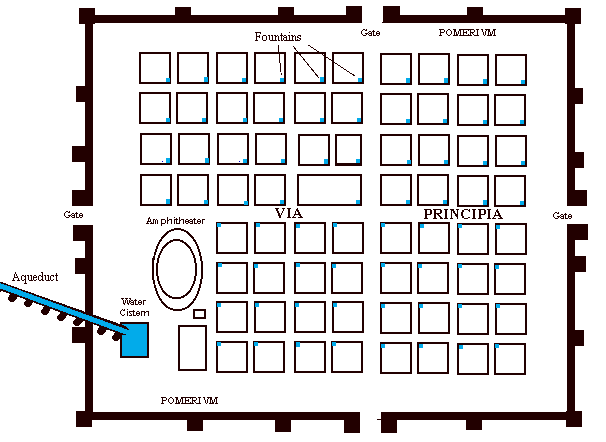 Return to Elegantly Laid Out Cities
Return to Elegantly Laid Out Cities
Of course, every city had to have its public entertainments, so a theater, an amphitheater, and public baths were an important part of the original planning and later expansion of Roman cities. These communities and the organized way they were planned seem so modern to many students of Roman history that it is a wonder that modern civic planners don't use more principles discovered by Roman civil engineers today. One almost forgets that these were still dangerous times and most cities, especially those near the frontiers, could be attacked by hostile barbarian raiders or rebel army generals at any time. Because of this, each Roman city had a stout outer defensive wall guarded by strong gates. The symbolic and spiritual wall or outer limit of a Roman city was called the pomerium. This was the strip of land going all the way around the city just inside the walls. Traditionally, the pomerium was a furrow marked out by by a priest plowing with two oxen. Plowing the pomerium was the first act of construction in the building of any new Roman town. David Macaulay goes into more of the details of constructing a Roman town in his excellently written and illustrated book, City: A Story of Roman Planning and Engineering
 Return to Elegantly Laid Out Cities
Return to Elegantly Laid Out Cities